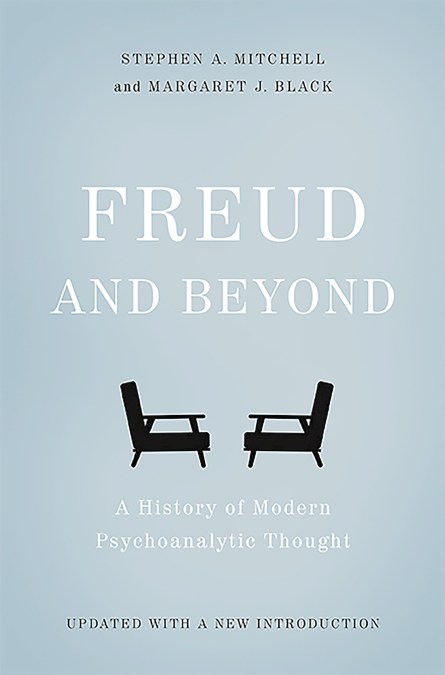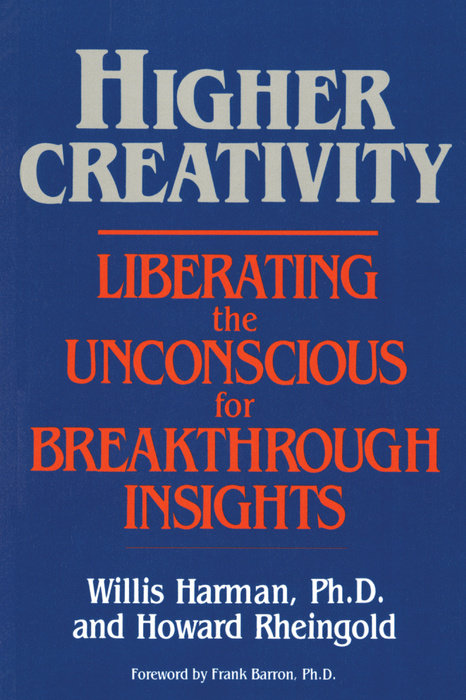
By Diane Ackerman — 2005
Does the mind reflect or dictate what the body sees and feels? What is the language of emotion? Is memory a function of our imaginations? Are we all just out of our minds? In this ambitious and enlightening work, Diane Ackerman combines an artist’s eye with a scientist’s erudition to illuminate... See more...
FULL SUMMARY
Does the mind reflect or dictate what the body sees and feels? What is the language of emotion? Is memory a function of our imaginations? Are we all just out of our minds? In this ambitious and enlightening work, Diane Ackerman combines an artist’s eye with a scientist’s erudition to illuminate the magic and mysteries of the human brain. With An Alchemy of Mind, she offers an unprecedented exploration of the mental fantasia in which we spend our days. In addition to explaining memory, thought, emotion, dreams, and language acquisition, Ackerman reports on the latest discoveries in neuroscience and addresses such controversial subjects as the effects of trauma, nature versus nurture, and male versus female brains. In prose that is not simply accessible but also beautiful and electric, Ackerman distills the hard, objective truths of science in order to yield vivid, anecdotal explanations about a range of existential questions regarding consciousness and the nature of identity.
YOU MIGHT ALSO LIKE
CLEAR ALL
BY TOPIC
BY TYPE
FILTER

TOPIC
- Mind-Body Connection (25)
- Neuroplasticity (19)
- Personal Development (19)
- Physical Health (19)
- Neuropsychology (17)
- Trauma Healing (16)
- Depression (15)
- Self-Healing (15)
- Memory (14)
- Science and Spirituality (14)
- Stress Management (14)
- Well-Being (14)
- Identity (13)
- Inner Peace (13)
- Self-Care (13)
- Stress (13)
- The Unconscious (13)
- Honoring Emotion (12)
- Mindfulness (12)
- Altered States (11)
- Human Potential (11)
- Parenting (11)
- Psychology (11)
- Resilience (11)
- Self-Development (11)
- Awareness (10)
- Diet and Nutrition (10)
- Imagination and Creativity (10)
- Self-Realization (10)
- Transformation (10)
- Addiction (9)
- Psychology and Spirituality (9)
- Self-Discovery (9)
- Self-Reflection Practices (9)
- Spiritual Awakening (9)
- Emotional Intelligence (EQ) (8)
- Mindfulness Practices (8)
- Spiritual Growth (8)
- Addiction Recovery (7)
- Athlete Well-Being (7)
- Authenticity (7)
- BIPOC Well-Being (7)
- Buddhism (7)
- Child’s Emotional Growth (7)
- Enlightenment (7)
- Life Challenges (7)
- Meditation (7)
- Near-Death Experience (7)
- Negative Self-Talk (7)
- PTSD (7)
- Relationship Challenges (7)
- Transpersonal Psychology (7)
- Afterlife (6)
- Anger (6)
- Black Well-Being (6)
- Communication Skills (6)
- Confidence (6)
- Fear (6)
- Finding Meaning (6)
- Global Challenges (6)
- Happiness (6)
- Philosophical Approaches (6)
- Psychoanalysis (6)
- Search for Purpose (6)
- Chronic Health Conditions (5)
- Dementia (5)
- Dysfunctional Childhood (5)
- Habits of Mind (5)
- Jungian Analysis (5)
- Non-Duality (5)
- Psychological Approaches (5)
- Self-Limiting Beliefs (5)
- Shame (5)
- Trauma (5)
- Visualization (5)
- Wholeness (5)
- Yoga (5)
- Activism/Service (4)
- Child’s ADD/ADHD (4)
- Children’s Well-Being (4)
- Cognition (4)
- Cognitive Behavioral Therapy (4)
- Compassion (4)
- Courage (4)
- Empowerment (4)
- Entrepreneurship (4)
- Family Dynamics (4)
- Growth Mindset (4)
- Habit Formation (4)
- Inner Strengths (4)
- Integrative Medicine (4)
- Joy (4)
- Neurodiversity (4)
- Peak Performance (4)
- Problem Solving (4)
- Psychedelic-Assisted Therapy (4)
- Setting Limits and Boundaries (4)
- Women’s Well-Being (4)
- ADD/ADHD (3)
- Aging (3)
- Autoimmune Disease (3)
- Belonging (3)
- Biofeedback (3)
- Cancer (3)
- Cognitive Psychology (3)
- Community Healing (3)
- Connection with Nature (3)
- Conscious Evolution (3)
- Creative Well-Being (3)
- Death and Dying (3)
- Decision Making (3)
- Disabled Well-Being (3)
- Dream Analysis (3)
- Dreamwork (3)
- Ego (3)
- Energy Healing (3)
- Facing Own Death (3)
- Focus (3)
- Grief (3)
- Guilt (3)
- Healing Approaches (3)
- Holotropic Breathwork (3)
- Illness and Injury (3)
- Inflammation (3)
- Inner Child (3)
- Living with Illness (3)
- Longevity (3)
- LSD (3)
- MDMA (3)
- Memoir (3)
- Mental Health Challenges (3)
- Other Dimensions and Beings (3)
- Past Lives and Reincarnation (3)
- Perception (3)
- Positive Psychology (3)
- Psilocybin (3)
- Quantum Physics (3)
- Self-Acceptance (3)
- Self-Actualization (3)
- Self-Compassion (3)
- Self-Love (3)
- Self-Worth (3)
- Shadow (3)
- Sleep (3)
- Social Justice (3)
- Spiritual Development (3)
- Taoism (3)
- Tibetan Buddhism (3)
- Visions and Hallucinations (3)
- Young Adult Well-Being (3)
- Acceptance (2)
- Adaptability (2)
- Alcohol Addiction (2)
- Anger Management (2)
- Archetypes (2)
- Art Therapy (2)
- Autism (2)
- Breathwork (2)
- Changes in Libido (2)
- Child’s Autism (2)
- Chronic Fatigue (2)
- Chronic Pain (2)
- Clinical Depression (2)
- Codependency (2)
- Comparing Belief Traditions (2)
- Cross-Cultural Dynamics (2)
- Ego Transcendence (2)
- Embodiment (2)
- Empathy (2)
- Endurance (2)
- Epigenetics (2)
- Family Acceptance (2)
- Forgiveness (2)
- Goal Setting (2)
- Healthy Eating (2)
- Inner Life (2)
- Intergenerational Trauma (2)
- Jealousy/Envy (2)
- Kindness (2)
- Learning Styles (2)
- LGBTQIA Well-Being (2)
- Love (2)
- Military to Civilian Re-entry (2)
- Motivation (2)
- Mysticism (2)
- Oneness (2)
- Optimism (2)
- Othering (2)
- Parapsychology (2)
- Past Life Regression (2)
- Positive Self-Talk (2)
- Race and Gender (2)
- Racial Identity (2)
- Racism (2)
- Raising Nonbinary Children (2)
- Self-Esteem (2)
- Self-Mastery (2)
- Sexuality (2)
- Situational Depression (2)
- Spiritual Crisis (2)
- Spiritual Life (2)
- Spirituality and Health (2)
- Suffering (2)
- Suicide (2)
- Synchronicity (2)
- Talk Therapy (2)
- The Feldenkrais Method (2)
- Time Management (2)
- Veteran Well-Being (2)
- Vulnerability (2)
- Abandonment (1)
- Accepting Love (1)
- Acupressure (1)
- Anima/Animus (1)
- Asking for Help (1)
- Astral Projection (1)
- Ayahuasca (1)
- Ayurveda (1)
- Biohacking (1)
- Body Image (1)
- Body Positivity (1)
- Bodywork (1)
- Building Culture (1)
- Burnout (1)
- Chakras (1)
- Challenges with Teens (1)
- Channeling (1)
- Chanting (1)
- Child’s Anxiety (1)
- Child’s Challenging Behavior (1)
- Child’s Trauma (1)
- Chronic Anxiety (1)
- Coming Out (1)
- Curiosity (1)
- Disconnection (1)
- Divorce and Breakup (1)
- DMT (1)
- Doubt (1)
- Drug Addiction (1)
- Eating Disorders (1)
- Ecospirituality (1)
- Ego Dissolution (1)
- Energy Balancing (1)
- Exercise (1)
- Existentialism (1)
- Failure (1)
- Faith (1)
- Fatherhood (1)
- Fatigue (1)
- Forest Bathing (1)
- Freedom (1)
- Gender Identity (1)
- Generational Healing (1)
- Generosity (1)
- Genetics (1)
- God (1)
- Goddess (1)
- Gratitude (1)
- Grit (1)
- Guided Meditation (1)
- Handling a Child’s Illness (1)
- Handling a Loved One’s Illness (1)
- Heartmath (1)
- Higher Calling (1)
- Hinduism (1)
- Holism (1)
- Hope (1)
- Hypnosis (1)
- Identity Shifts (1)
- Immigration and Assimilation (1)
- Indigenous Healing Approaches (1)
- Intention (1)
- Interdependence (1)
- Internal Family Systems (1)
- Intimacy (1)
- Journaling (1)
- Latinx Well-Being (1)
- Leadership (1)
- Letting Go (1)
- LGBTQIA Children (1)
- LGBTQIA Sexuality (1)
- Life Force Energy (1)
- Lifestyle Medicine (1)
- Living as an Empath (1)
- Loneliness (1)
- Lovingkindness Meditation (1)
- Managing Energy (1)
- Mantra Meditation (1)
- Marriage (1)
- Masculine/Feminine Dynamics (1)
- Mediums (1)
- Mindfulness Meditation (1)
- Moral Philosophy (1)
- Naturopathy (1)
- Obsessions/Compulsions (1)
- OCD (1)
- Offering Support to Others (1)
- Performance Anxiety (1)
- Plant Spirit Medicine (1)
- Post-Traumatic Growth (1)
- Poverty/Economic Inequality (1)
- Pregnancy and Childbirth (1)
- Presence (1)
- Productivity (1)
- Psychedelic Research (1)
- Psychic Abilities (1)
- Qi (1)
- Qigong (1)
- Racial Discrimination (1)
- Racial Healing (1)
- Racial Justice (1)
- Religious Experience (1)
- Reproductive Health (1)
- Ritual (1)
- Rolfing (1)
- Romantic Relationships (1)
- Self-Control (1)
- Self-Pressure (1)
- Self-Reliance (1)
- Sex (1)
- Sexual Health (1)
- Somatic Experiencing (1)
- Somatic Practices (1)
- Spiritual Healing (1)
- Spiritual Practices (1)
- Spirituality and Politics (1)
- Stoicism (1)
- Subconscious (1)
- Telepathy (1)
- The Yips (1)
- Toxic Relationships (1)
- Transcendent Experience (1)
- Trauma-Informed Therapy (1)
- Trust (1)
- Unfulfilled Career (1)
- Values (1)
- Veganism (1)
- Vegetarianism (1)
- Weight Concerns (1)
- Yoga Therapy (1)
FILTER

TEACHER
- Daniel Goleman (4)
- Daniel J. Siegel (4)
- David Perlmutter (3)
- David R. Hawkins (3)
- Deepak Chopra (3)
- Howard Gardner (3)
- John Bradshaw (3)
- John Perry (3)
- Judith Blackstone (3)
- The Dalai Lama (3)
- Andrew Solomon (2)
- Bessel van der Kolk (2)
- Charles Tart (2)
- Ervin László (2)
- John Sarno (2)
- Karla McLaren (2)
- Lisa Feldman Barrett (2)
- Mantak Chia (2)
- Mihály Csíkszentmihályi (2)
- Peter Russell (2)
- Ram Dass (2)
- Richard Davidson (2)
- Rudolph Ballentine (2)
- Willis Harman (2)
- Abraham Maslow (1)
- Alan Watts (1)
- Alanis Morissette (1)
- Albert Hofmann (1)
- Amy Morin (1)
- Andrew Weil (1)
- Blaise Aguirre (1)
- Bruce Lipton (1)
- Chip Conley (1)
- Chögyam Trungpa (1)
- Connie Zweig (1)
- Dan Buettner (1)
- Dave Asprey (1)
- David Spiegel (1)
- Dennis McKenna (1)
- Donna Jackson Nakazawa (1)
- Eric Maisel (1)
- Forrest Hanson (1)
- Gabor Maté (1)
- Gary Zukav (1)
- Gay Hendricks (1)
- Ida Rolf (1)
- J. Krishnamurti (1)
- James Doty (1)
- Jan Willis (1)
- Jana Long (1)
- Jane E. Brody (1)
- Jane Roberts (1)
- Jean Houston (1)
- Joel Kahn (1)
- Leah Guy (1)
- Linda Graham (1)
- Lindo Bacon (1)
- Lisa Wimberger (1)
- Lise Van Susteren (1)
- Lodro Rinzler (1)
- Lori Gottlieb (1)
- Michio Kaku (1)
- Moshé Feldenkrais (1)
- Nicole LePera (1)
- Oliver Sacks (1)
- Paramahansa Yogananda (1)
- Peter A. Levine (1)
- Philip Goldberg (1)
- Phillip Moffitt (1)
- Piero Ferrucci (1)
- Poppy Jamie (1)
- Ralph Metzner (1)
- Reema Datta (1)
- Rick Doblin (1)
- Rick Strassman (1)
- Robert A. Monroe (1)
- Ruby Wax (1)
- Sanjay Gupta (1)
- Shakti Gawain (1)
- Shauna Shapiro (1)
- Sri Aurobindo (1)
- Stephanie Y. Evans (1)
- Steven Kotler (1)
- Terri Cole (1)
- Vicki Culpin (1)
- Viktor E. Frankl (1)
- William Bloom (1)
- Yongey Mingyur Rinpoche (1)










